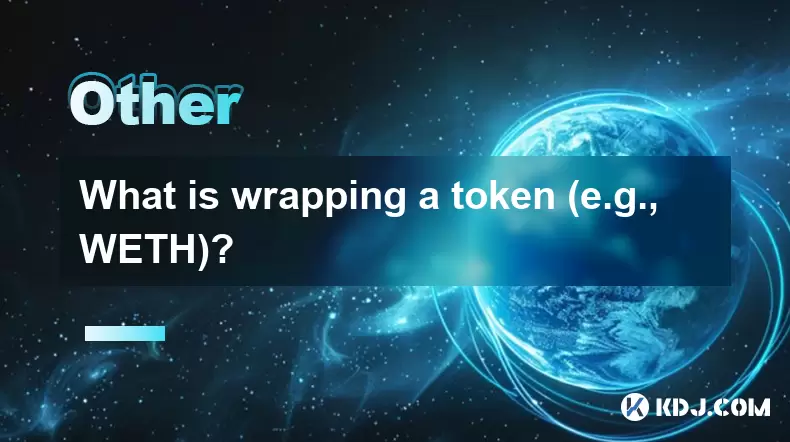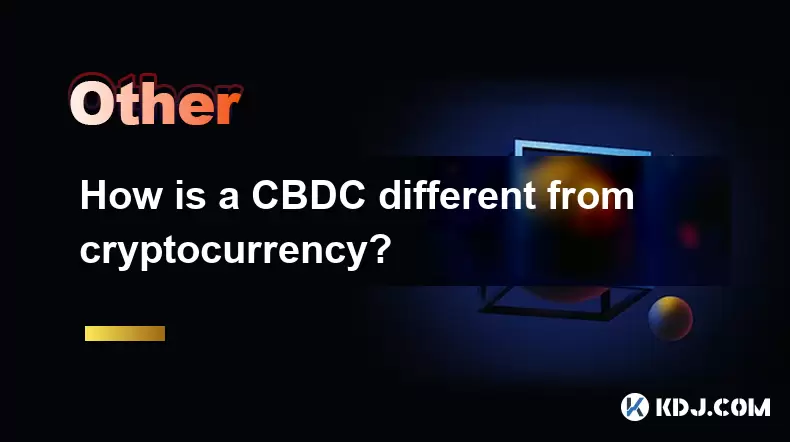-
 Bitcoin
Bitcoin $118300
-3.52% -
 Ethereum
Ethereum $4554
-3.81% -
 XRP
XRP $3.090
-5.78% -
 Tether USDt
Tether USDt $1.000
0.04% -
 BNB
BNB $842.0
-0.27% -
 Solana
Solana $194.6
-3.24% -
 USDC
USDC $0.9998
0.00% -
 TRON
TRON $0.3600
-0.20% -
 Dogecoin
Dogecoin $0.2243
-7.95% -
 Cardano
Cardano $0.9066
2.57% -
 Hyperliquid
Hyperliquid $45.89
-4.06% -
 Chainlink
Chainlink $22.49
-5.34% -
 Stellar
Stellar $0.4261
-6.01% -
 Sui
Sui $3.753
-5.87% -
 Bitcoin Cash
Bitcoin Cash $592.1
-3.33% -
 Ethena USDe
Ethena USDe $1.001
-0.01% -
 Hedera
Hedera $0.2502
-5.51% -
 Avalanche
Avalanche $23.71
-6.22% -
 Litecoin
Litecoin $121.8
-6.36% -
 Toncoin
Toncoin $3.416
-2.58% -
 UNUS SED LEO
UNUS SED LEO $9.323
0.85% -
 Shiba Inu
Shiba Inu $0.00001291
-6.93% -
 Uniswap
Uniswap $10.91
-9.13% -
 Polkadot
Polkadot $4.010
-5.38% -
 OKB
OKB $93.46
-9.08% -
 Dai
Dai $0.9999
0.00% -
 Bitget Token
Bitget Token $4.559
-4.99% -
 Cronos
Cronos $0.1545
-6.93% -
 Ethena
Ethena $0.7362
-5.51% -
 Aave
Aave $311.6
-4.32%
What is wrapping a token (e.g., WETH)?
Wrapped tokens like WETH enable ETH to be used in DeFi by making it ERC-20 compatible, allowing seamless interaction with dApps, DEXs, and lending platforms across blockchains.
Aug 13, 2025 at 11:36 am

Understanding Wrapped Tokens
Wrapped tokens are digital assets that represent another cryptocurrency on a different blockchain. They enable interoperability between blockchains by allowing tokens from one network to be used on another. For example, Ethereum’s native currency, ETH, cannot be directly used in certain decentralized applications (dApps) that require ERC-20 tokens. To solve this, ETH is "wrapped" into Wrapped Ether (WETH), which conforms to the ERC-20 standard. This process involves locking the original asset in a smart contract and issuing an equivalent amount of the wrapped version on the target chain.
Why Wrap a Token Like ETH?
The primary reason for wrapping a token is compatibility with smart contracts and decentralized exchanges (DEXs). Many DeFi protocols, such as Uniswap or Aave, are built to interact with ERC-20 tokens. Since ETH is not an ERC-20 token by default, it cannot be directly used for swapping, lending, or providing liquidity on these platforms. By converting ETH to WETH, users gain access to these functionalities. This transformation does not change the value—1 WETH always equals 1 ETH—but it changes how the token behaves within smart contract environments.
How Wrapping Works: The Technical Process
Wrapping a token involves a trustless mechanism powered by smart contracts. Here is how the process works when converting ETH to WETH:
- A user sends ETH to a designated smart contract that acts as a custodian.
- The contract verifies the transaction and mints an equivalent amount of WETH.
- The newly created WETH is sent to the user’s wallet address.
- The original ETH remains locked in the contract until the WETH is "unwrapped."
- When unwrapping, the user sends WETH back to the contract, which then burns the WETH and releases the original ETH.
This system ensures that the supply of WETH is always backed 1:1 by ETH held in reserve. The smart contract code is typically open-source and audited, allowing users to verify its integrity.
Using a Wallet to Wrap ETH into WETH
Most users wrap ETH using a Web3 wallet like MetaMask in conjunction with a decentralized exchange interface. Below are the steps to wrap ETH into WETH using Uniswap as an example: - Connect your MetaMask wallet to the Uniswap interface.
- Navigate to the swap section and select ETH as the input token.
- For the output token, search for WETH and select it.
- Enter the amount of ETH you wish to wrap.
- Click “Wrap” instead of “Swap”—this triggers the wrapping function.
- Confirm the transaction in your wallet, including gas fees.
- Once confirmed, your wallet balance will show WETH instead of ETH.
The same interface allows unwrapping by reversing the process and clicking “Unwrap.” No intermediary fees are charged by Uniswap for wrapping, though gas fees in ETH are always required to execute the transaction on the Ethereum network.
Security and Trust Considerations
While wrapping is generally safe, users must ensure they are interacting with legitimate smart contracts. The official WETH contract is maintained by the WETH9 smart contract deployed at a verified address on Etherscan. Always verify: - The contract address matches the official WETH deployment.
- The interface you’re using (e.g., Uniswap, Matcha) is authentic and not a phishing site.
- You are on the correct network (e.g., Ethereum Mainnet) and not a testnet.
Using unofficial or cloned contracts can lead to loss of funds. Additionally, while the wrapping process is non-custodial—meaning you retain control of your assets—phishing attacks and fake websites remain a significant risk. Bookmark official sites and double-check URLs before interacting.
Other Examples of Wrapped Tokens
WETH is not the only wrapped token in the ecosystem. Similar mechanisms exist across blockchains to enable cross-chain functionality: - WBTC (Wrapped Bitcoin): Bitcoin locked in custody, with ERC-20 WBTC issued on Ethereum.
- renBTC: Another Bitcoin wrapper using a decentralized minting process.
- wBNB (Wrapped BNB): Binance Coin wrapped for use on BNB Smart Chain as an BEP-20 token.
- wMATIC: Polygon’s MATIC token wrapped to function as an ERC-20 on Ethereum for bridging.
These tokens follow the same principle: locking an asset on one chain and representing it on another in a compatible format. This enables Bitcoin to earn yield in Ethereum DeFi or allows BNB to be used in Ethereum-based dApps.
Frequently Asked Questions
Can I send WETH to an exchange that only accepts ETH?
Most major exchanges support both ETH and WETH and will automatically unwrap WETH upon deposit. However, some platforms may not recognize WETH. Always check the exchange’s deposit guidelines. If in doubt, unwrap WETH back to ETH before sending.Is there a fee to wrap or unwrap ETH?
There is no direct fee charged by the WETH contract. However, every transaction on the Ethereum network requires gas fees paid in ETH. These fees fluctuate based on network congestion and are paid to miners or validators.Does wrapping ETH increase my exposure to smart contract risk?
Yes. While the WETH contract is widely trusted and audited, any interaction with smart contracts carries inherent risk. Bugs or exploits—though rare in well-established contracts—could potentially lead to fund loss. Limit interactions to verified and reputable platforms.Can I wrap ETH on Layer 2 networks like Arbitrum or Optimism?
Yes. Both Arbitrum and Optimism support their own versions of WETH. The wrapping process is similar: use the native bridge or a DEX interface to convert ETH to WETH on that specific Layer 2. The WETH on Arbitrum, for example, exists only on Arbitrum and cannot be used on Ethereum Mainnet without bridging.
Disclaimer:info@kdj.com
The information provided is not trading advice. kdj.com does not assume any responsibility for any investments made based on the information provided in this article. Cryptocurrencies are highly volatile and it is highly recommended that you invest with caution after thorough research!
If you believe that the content used on this website infringes your copyright, please contact us immediately (info@kdj.com) and we will delete it promptly.
- Kazakhstan's Crypto Leap: Bitcoin ETF and Central Asia's Digital Finance Future
- 2025-08-13 12:45:19
- BlockDAG Presale Blazes Past $371M: Fundraising Frenzy Fuels Crypto Sensation
- 2025-08-13 13:05:21
- Meme Coins: Chasing the 2025 Surge – Which Will Moonshot?
- 2025-08-13 10:25:23
- Bitcoin's Wild Ride: Rally, Pullback, and What's Next
- 2025-08-13 10:25:23
- Bitcoin, Bitmax, and Institutional Demand: A New Era of Crypto Investment
- 2025-08-13 10:45:12
- Solana, ROAM, and Airdrops: What's the Buzz in 2025?
- 2025-08-13 11:35:13
Related knowledge

How does blockchain enable Web3?
Aug 13,2025 at 11:35am
Understanding the Role of Blockchain in Web3 InfrastructureBlockchain serves as the foundational layer upon which Web3 is built, enabling a decentrali...

How is a CBDC different from cryptocurrency?
Aug 12,2025 at 09:21am
Understanding the Core Nature of CBDCsA Central Bank Digital Currency (CBDC) is a digital form of a country’s sovereign currency, issued and regulated...

What is a CBDC (Central Bank Digital Currency)?
Aug 13,2025 at 11:36am
Understanding the Concept of a Central Bank Digital CurrencyA CBDC (Central Bank Digital Currency) is a digital form of a country’s fiat currency that...

How can zero-knowledge proofs enhance privacy on a blockchain?
Aug 12,2025 at 02:15am
Understanding Zero-Knowledge Proofs in Blockchain ContextZero-knowledge proofs (ZKPs) are cryptographic protocols that allow one party (the prover) to...

How does blockchain governance work?
Aug 13,2025 at 11:35am
Understanding Blockchain GovernanceBlockchain governance refers to the mechanisms and processes through which decisions are made about the development...

What is on-chain vs. off-chain data?
Aug 13,2025 at 11:35am
Understanding On-Chain Data in CryptocurrencyOn-chain data refers to all information that is permanently recorded and stored directly on a blockchain....

How does blockchain enable Web3?
Aug 13,2025 at 11:35am
Understanding the Role of Blockchain in Web3 InfrastructureBlockchain serves as the foundational layer upon which Web3 is built, enabling a decentrali...

How is a CBDC different from cryptocurrency?
Aug 12,2025 at 09:21am
Understanding the Core Nature of CBDCsA Central Bank Digital Currency (CBDC) is a digital form of a country’s sovereign currency, issued and regulated...

What is a CBDC (Central Bank Digital Currency)?
Aug 13,2025 at 11:36am
Understanding the Concept of a Central Bank Digital CurrencyA CBDC (Central Bank Digital Currency) is a digital form of a country’s fiat currency that...

How can zero-knowledge proofs enhance privacy on a blockchain?
Aug 12,2025 at 02:15am
Understanding Zero-Knowledge Proofs in Blockchain ContextZero-knowledge proofs (ZKPs) are cryptographic protocols that allow one party (the prover) to...

How does blockchain governance work?
Aug 13,2025 at 11:35am
Understanding Blockchain GovernanceBlockchain governance refers to the mechanisms and processes through which decisions are made about the development...

What is on-chain vs. off-chain data?
Aug 13,2025 at 11:35am
Understanding On-Chain Data in CryptocurrencyOn-chain data refers to all information that is permanently recorded and stored directly on a blockchain....
See all articles

























































































